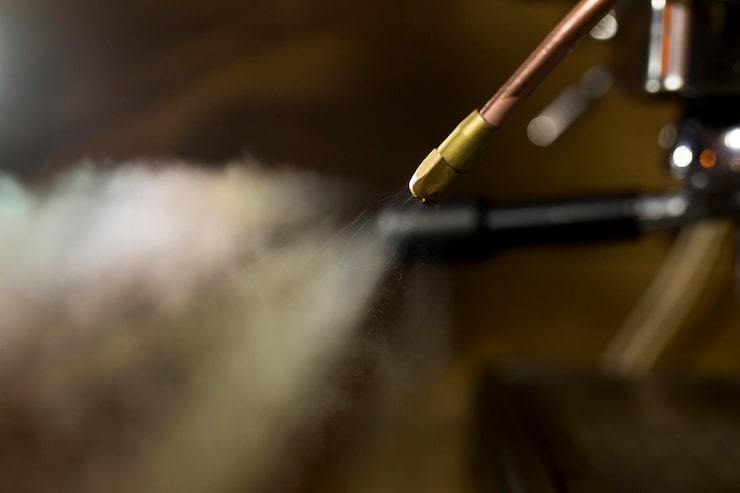Understanding How The ELECTROSTATIC Powder Coating is Applied is essential for industries looking to improve surface finishing quality, durability, and environmental compliance. Electrostatic powder coating has become a widely adopted method in manufacturing sectors due to its efficiency, durability, and environmentally friendly nature compared to traditional liquid paints. This article will explore the detailed process of applying electrostatic powder coating, its benefits, and key considerations to ensure optimal results.

Electrostatic powder coating is a finishing technique where finely ground particles of pigment and resin are electrically charged and sprayed onto a grounded workpiece. The charged powder particles adhere uniformly to the surface, forming a coating that is later cured under heat to create a smooth, durable finish. This process allows for excellent coverage, minimal waste, and the production of coatings resistant to corrosion, chemicals, and impact.
The first step in How The ELECTROSTATIC Powder Coating is Applied involves surface preparation. The quality of the coating heavily depends on the cleanliness and condition of the substrate. Any dust, grease, oil, or rust must be removed through cleaning methods such as chemical degreasing, abrasive blasting, or washing with solvents. Proper surface preparation ensures that the powder coating adheres well and results in a uniform finish.
Next comes the application phase where the powder coating is sprayed. Using specialized electrostatic spray guns, operators apply the powder by charging it as it leaves the nozzle. The workpiece, typically grounded via a conductive fixture, attracts the charged powder particles, resulting in a uniform and adherent coating layer. The electrostatic charge plays a vital role in this process by minimizing overspray and improving transfer efficiency, which in turn reduces material waste and cost.
Once the powder has been evenly applied, the coated item moves to the curing oven. Curing involves heating the workpiece to a specific temperature, typically between 160°C and 210°C, depending on the powder formulation. This heat causes the powder particles to melt, flow, and chemically cross-link, forming a continuous, hard, and durable film. Proper curing is critical; insufficient heat can result in poor adhesion or a brittle coating, while excessive heat may cause discoloration or deformation of the substrate.
The advantages of electrostatic powder coating go beyond aesthetics and durability. Because the powder is applied in a dry form without solvents, there are virtually no volatile organic compounds (VOCs) emitted, making the process environmentally friendly and compliant with stringent regulations. Additionally, powder coatings provide excellent resistance to chipping, scratching, and fading, which extends the lifespan of coated products and reduces maintenance costs.
Key factors influencing How The ELECTROSTATIC Powder Coating is Applied include the type of powder used, the geometry and material of the substrate, and environmental conditions during application. Powders are available in various formulations such as epoxy, polyester, polyurethane, and hybrid blends, each offering distinct properties suited to specific applications. Understanding these options helps manufacturers select the right powder for their product requirements.
The design of the workpiece can also affect coating quality. Complex shapes, sharp edges, or recesses might challenge uniform powder coverage and require adjustments in application techniques or equipment settings. Operators must ensure proper grounding and optimize gun positioning to achieve consistent coating thickness.
Maintenance of the coating equipment, including spray guns, booths, and ovens, is vital to maintain application quality and process efficiency. Regular cleaning prevents powder buildup and clogging, while calibration of equipment ensures the right electrostatic charge and spray parameters are maintained.
In conclusion, How The ELECTROSTATIC Powder Coating is Applied involves a precise sequence of surface preparation, powder application, and curing. Mastering each stage is crucial to obtaining a high-quality, durable finish that meets both functional and aesthetic requirements. This coating method not only enhances product performance but also aligns with modern environmental and economic demands, making it a preferred choice across various industries such as automotive, appliances, architecture, and consumer goods.
For businesses considering electrostatic powder coating, understanding this process in depth can lead to better decision-making regarding equipment investment, process optimization, and quality control strategies. With ongoing advancements in powder technology and application methods, electrostatic powder coating will continue to evolve, offering even greater benefits and expanding possibilities for surface finishing solutions.


